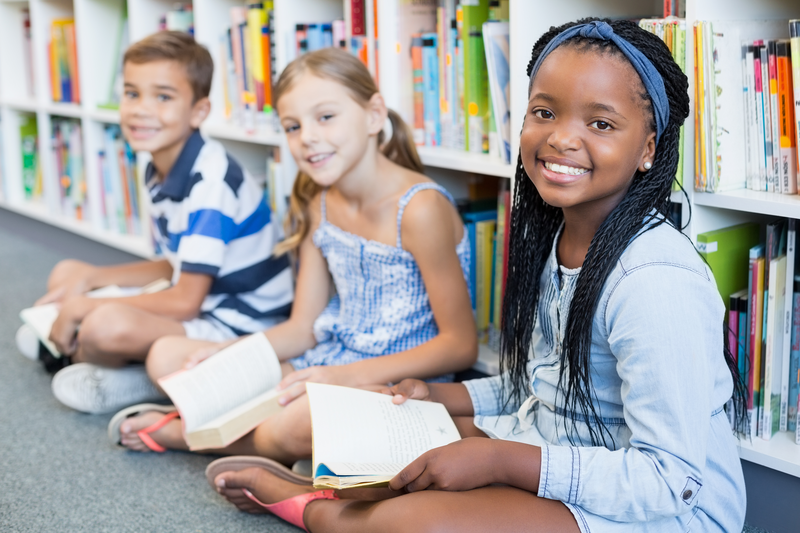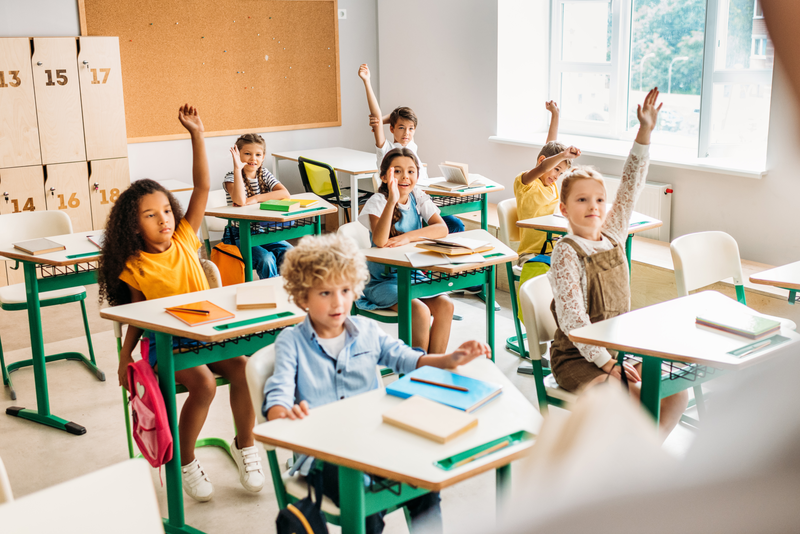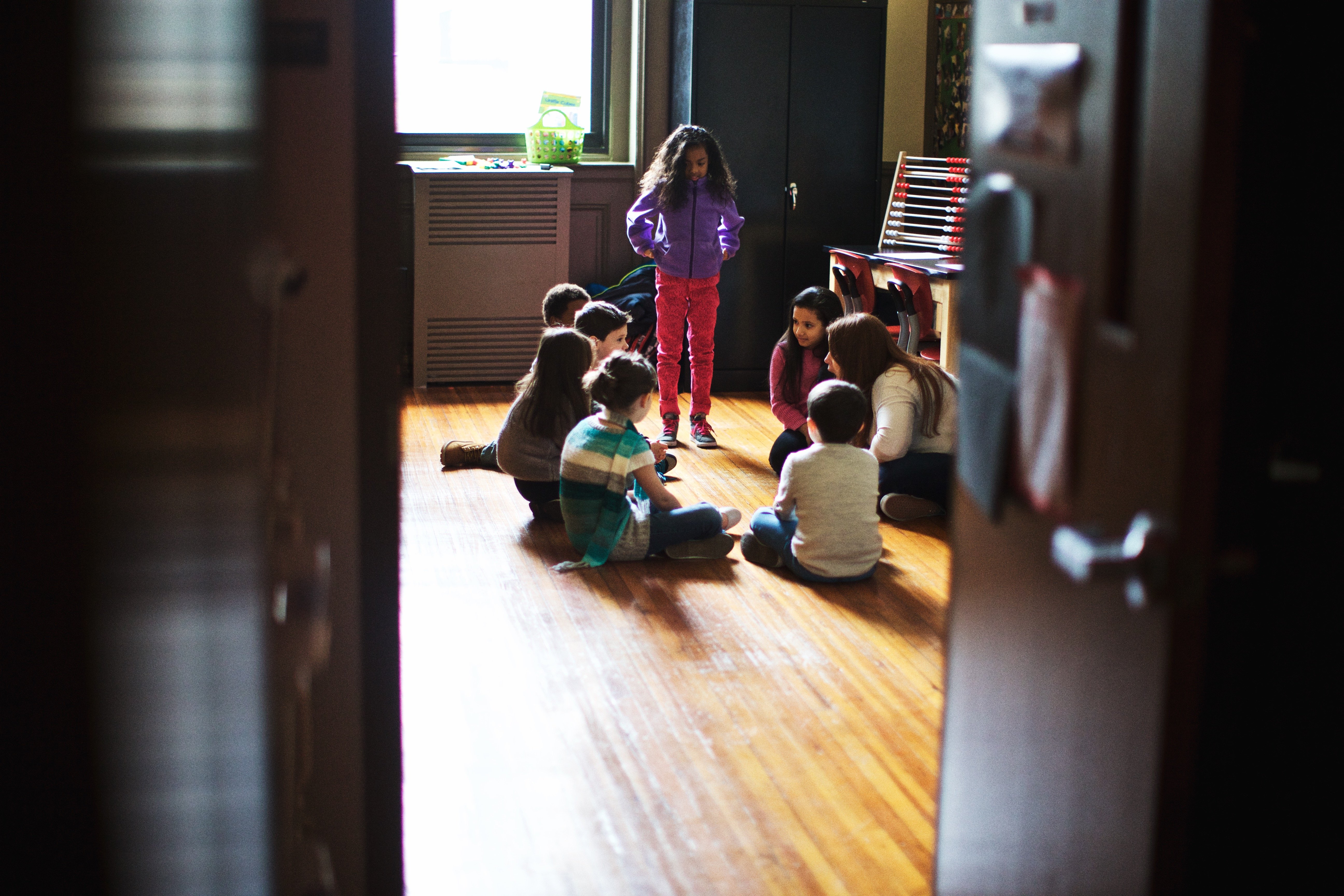Posted in: Aha! Blog > Wit & Wisdom Blog > Equity access > Believing in Our Students
This month, we encouraged educators across the country to reflect on access and equity, specifically for students with learning disabilities. Rebecca Burgess, a classroom teacher-leader and professional learning facilitator for Great Minds®, describes how Wit & Wisdom® can help decrease biases and maintain high expectations for all learners.
As educators, we all serve students with learning disabilities. We differentiate our lessons to meet unique needs and work alongside our students toward mastery of rigorous, grade-level content. But how often do our students with learning disabilities really shine in our classrooms or outperform their peers? How often do we believe they can or will? There was a time I did not think this was possible.
An Unexpected Discovery
In 2014, I participated in a unique professional development experience focused on metacognitive learning and mindset shifting. Instead of being talked at, we did the talking. We wore name tags and sat in comfortable chairs strategically positioned for optimal eye contact with every educator in the multitiered board room. We had spent the previous evening independently studying a complex problem that often occurs in a school setting. Then we discussed and debated solutions for hours. The facilitator only intervened to pose additional questions. As in life, we often left with more questions than answers. It was an incredibly stimulating and rewarding professional development experience.
One of the participants, Mason, was conspicuously among the most intelligent educators in the room. He was thoughtful, careful, and would only speak when he realized we were missing a key consideration. His ideas were mind-shattering curveballs that filled the room with a buzz of silent energy while our brains tried to catch up. People looked to him with respect and delighted in his opinion. He was the brainiac among us—the one who always knew the right questions to ask and the right problem to solve. When our 300 hours of learning together over the course of two years came to an end, after a myriad of opportunities to be blown away by this truly great mind, Mason shared a secret with all of us:
“I have a learning disability.”
There were audible gasps; our biases deceived us. Someone who led us with astute and unparalleled intelligence also had a learning disability. Some of us, who had not considered that people with learning disabilities could shine and outperform their peers, gained new understanding. How many of us consider this when we teach students with learning disabilities?
Students with learning disabilities may know more than the other students in the room; they may have more potential. Our students with learning disabilities may be future leaders. They can blow other people’s minds; they can throw academic curveballs. They can not only master the content but also lead the discussions, solve problems, and inspire masses. Internalizing this mindset and arming ourselves with a curriculum like Wit & Wisdom can lead us to break down barriers and support every student to realize their greatness.
Uncovering My Bias
As most educators do, I take many steps to support students with learning disabilities. I study each Individualized Education Plan (IEP), and I implement appropriate accommodations in my planning. While teaching Wit & Wisdom, I take care to plan supports such as the following:
- chunking tasks
- providing visual models
- giving concise directions
- prompting for materials
- providing time to think and then turn and talk before every share
- giving sentence frames when needed
- partnering strategically
- providing assistive technology
I meet with the special educator weekly to receive feedback and updates, and I regularly communicate with families and caregivers. Before I met Mason, I did all these things; but when Mason shared about his disability, I discovered that I held a detrimental implicit bias: I did not think my students with learning disabilities could outperform their peers. If I had, I would not have been surprised by Mason’s secret, right? Did I believe that my students with learning disabilities could meet grade-level expectations? It haunted me to realize that I was operating from a bias that could keep my students with learning disabilities from meeting the expectations their IEPs were designed to help them reach. After I met Mason, my mindset shifted. I now know that, with these accommodations, my students with learning disabilities can not only access grade-level content but soar beyond. After all, an IEP is designed to help students access grade-level content, not keep them from it. Every IEP starts with, “In order for (student name) to access grade-level standards, settings, curriculum, assessment, and instructions, the following accommodations will be provided.” It is a horrid truth, but before I met Mason, I would read these words without deeply believing them. My bias was keeping so many of my students from reaching their true potential.
Moving from “Can’t” to “Can”
I teach Wit & Wisdom to three Grade 3 classrooms. At the start of every year, I can see that my young students with learning disabilities have already internalized a certain amount of “I can’t” and “I’m not expected to.” I use IEPs to support and differentiate, while my high expectations stay the same for everyone. I have popsicle sticks with names on each for cold calling after Turn and Talks to protect my students from dangerous biases. In my classroom, students expect to engage readily and are not surprised when I call on them. My students with IEPs transform quickly from “I can’t” to “I can!”
During our first Socratic Seminar, Isaiah, Arsema, Renata, and Ayden—four of my students with learning disabilities—confidently shared their brilliant thoughts alongside their peers. The special education teacher I work with was moved to tears. Wit & Wisdom prepares all students with the content knowledge they need to communicate confidently and passionately and levels the playing field so all students can reach their potential. Belief in this curriculum, the potential of our students, and the support of their IEPs are the ingredients needed for all our students to reach their potential. For me, standing witness as all my students discover and share their brilliance is the best part of teaching Wit & Wisdom. When presented with engaging content and the expectation that they will grapple with rigorous tasks, students who did not previously believe they could, do.
I see Mason in my students with learning disabilities and feel so grateful for the lessons I have learned about setting implicit limits on human potential. When your students with disabilities think they can’t, do you believe them, step back, and allow them to shrink? Or do you say, “Oh no, honey, you can. You are going to lead this world someday.”
Submit the Form to Print

Rebecca Burgess
Rebecca Burgess is a Grade 3 English language arts teacher and grade-level chair at KIPP Northeast Elementary in Denver, CO, as well as a Wit & Wisdom professional learning facilitator for Great Minds. Rebecca began her education career 15 years ago, teaching various grade-levels at Achievement First and KIPP schools in New Haven, CT and Newark, NJ. She also worked as an Assistant Principal and Interim School Leader in Newark. In her spare time, Rebecca spends time outdoors with her husband and golden retriever, often with a delicious cup of coffee in hand.










